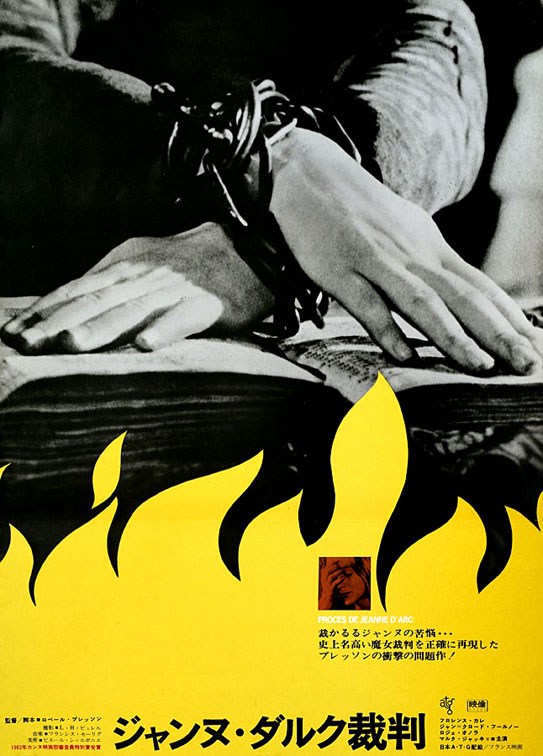Big-screen interpretations of Joan of Arc are often ridiculous (Jean Seberg in Saint Joan, Milla Jovovich in The Messenger), can be epically confident (Sandrine Bonnaire in Joan the Maid), and have once reached the sublime (Maria Falconetti in The Passion of Joan of Arc). In his 1962 The Trial of Joan of Arc, Robert Bresson cast Florence Delay, a 20-year-old university student as his heroine, and she emerges as one of the most perfect of his director’s “models”: a steadfast teenage saint whose stoic countenance is punctured once, at the film’s beginning, by a burst of tears. Bresson rejected acting; he wanted his nonprofessional performers simply to be, part of his notion of film as a pure art form. The script for Joan of Arc adheres quite closely to the actual record of the trial and of the rehabilitation process 25 years later: Joan is interrogated and taken back to her cell repeatedly, the back-and-forth of the inquisition and the clang of Joan’s shackles providing the film’s rhythm. Delay, her limpid eyes frequently downcast, isn’t “unexpressive” but unsentimental; though austere, she is unwavering, resolute. She gave her director what he wanted, but gives audiences more: a new way to access and appreciate history’s most remarkable adolescent visionary. (NR) MELISSA ANDERSON
Tue., May 1, 7 p.m.; May 2-10, 2012




